Choosing the right display can significantly impact your productivity, entertainment, and overall computing experience. For many users, 27-inch monitors strike an ideal balance between screen real estate and desk footprint, making them a popular choice for diverse needs, from professional creative work to immersive gaming. However, navigating the myriad of specifications and features can feel overwhelming.
This comprehensive buying guide is designed to cut through the complexity, helping you understand the critical factors that truly matter when evaluating 27-inch monitors. We'll break down essential specifications, explain their impact, and highlight key features that can elevate your daily use. By the end of this article, you'll have the clear, objective insights needed to make an informed decision and find a monitor that perfectly suits your specific requirements.
Key Factors for Your 27-inch Monitor Decision
When selecting 27-inch monitors, certain specifications form the bedrock of its performance and suitability for different tasks. Understanding these core factors is crucial for ensuring your new display meets your expectations for image quality, responsiveness, and overall value.
Resolution

Resolution defines the number of pixels displayed on your screen, directly influencing image sharpness and the amount of desktop space available for multitasking. For a 27-inch monitor, the choice of resolution significantly impacts the visual experience.
A 4K (3840x2160) resolution offers stunning clarity and gorgeous detail, making it ideal for professional photo and video editing or anyone seeking the sharpest images. It also provides ample screen real estate, allowing you to fit multiple program windows side-by-side without feeling cramped.
Many consider 1440p (2560x1440) the 'sweet spot' for 27-inch monitors. It delivers sharp visuals and sufficient desktop space for most users without demanding an excessively powerful graphics card, offering a great balance between visual quality and performance.
On the other hand, 1080p (1920x1080) resolution on a 27-inch screen can appear pixelated or less sharp, especially when viewed up close, due to lower pixel density. While more affordable, it's generally not recommended for optimal visual clarity at this size.
Higher resolutions, particularly 4K, typically come with a higher price tag and require a more powerful graphics processing unit (GPU) to maintain smooth performance, especially in gaming. For gaming, 1440p often provides the best balance of visual fidelity and achievable frame rates for most setups.
Panel Technology
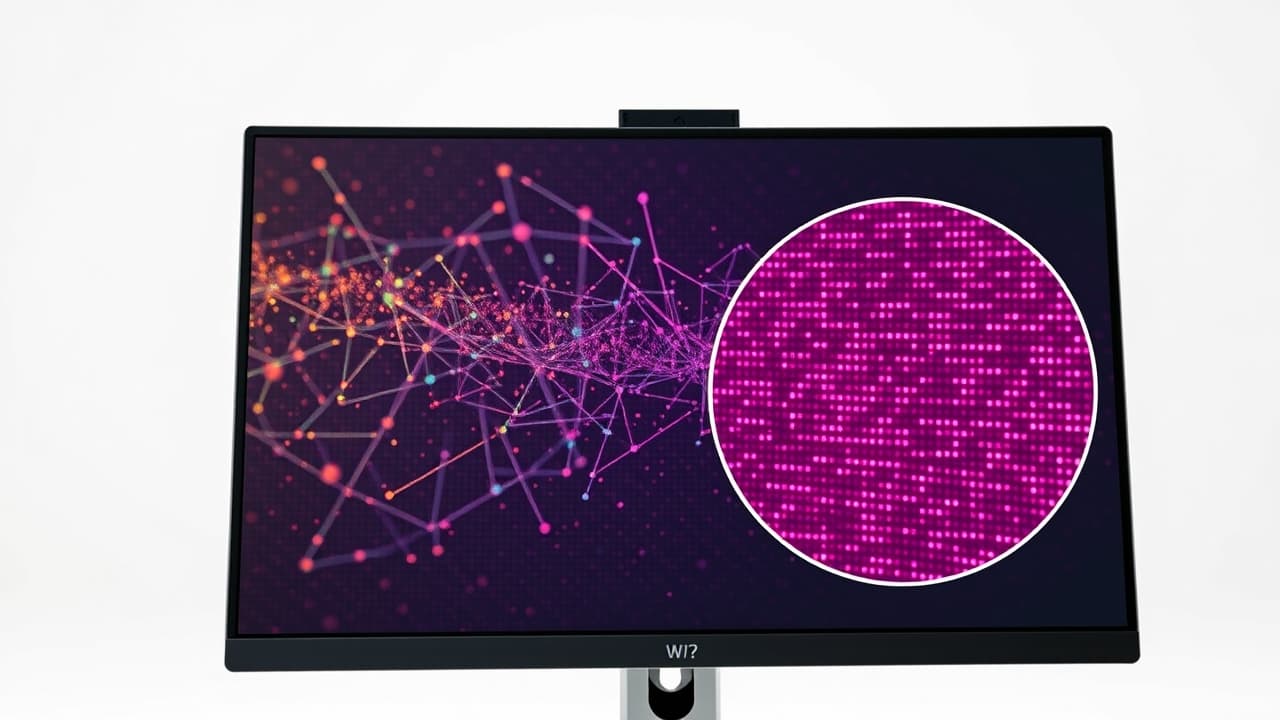
The underlying panel technology is fundamental to a monitor's image quality, influencing factors like color accuracy, contrast, viewing angles, and response time. Each type offers distinct advantages and disadvantages for 27-inch monitors.
IPS (In-Plane Switching) panels are renowned for excellent color reproduction, wide viewing angles, and consistent colors. This makes them ideal for creative work like graphic design or photo editing, as well as general use. Newer IPS Black technology significantly improves their contrast ratios.
VA (Vertical Alignment) panels excel in contrast ratios, offering deeper blacks compared to IPS. This enhances movie watching and casual gaming, though they can sometimes have slower pixel response times, leading to potential motion blur.
OLED/QD-OLED panels represent the pinnacle of image quality, delivering perfect blacks, infinite contrast, and instantaneous pixel response. They are superb for HDR content and high-end gaming, though they typically come at a higher price and carry a minor risk of burn-in over time, which modern protections aim to mitigate.
For most users seeking a balanced experience, an IPS panel is a solid choice. If deep blacks and high contrast are priorities, especially for media consumption, a VA panel or a premium OLED display would be more suitable. TN panels, while fast, are generally unsuitable for most users due to poor color and viewing angles.
Refresh Rate
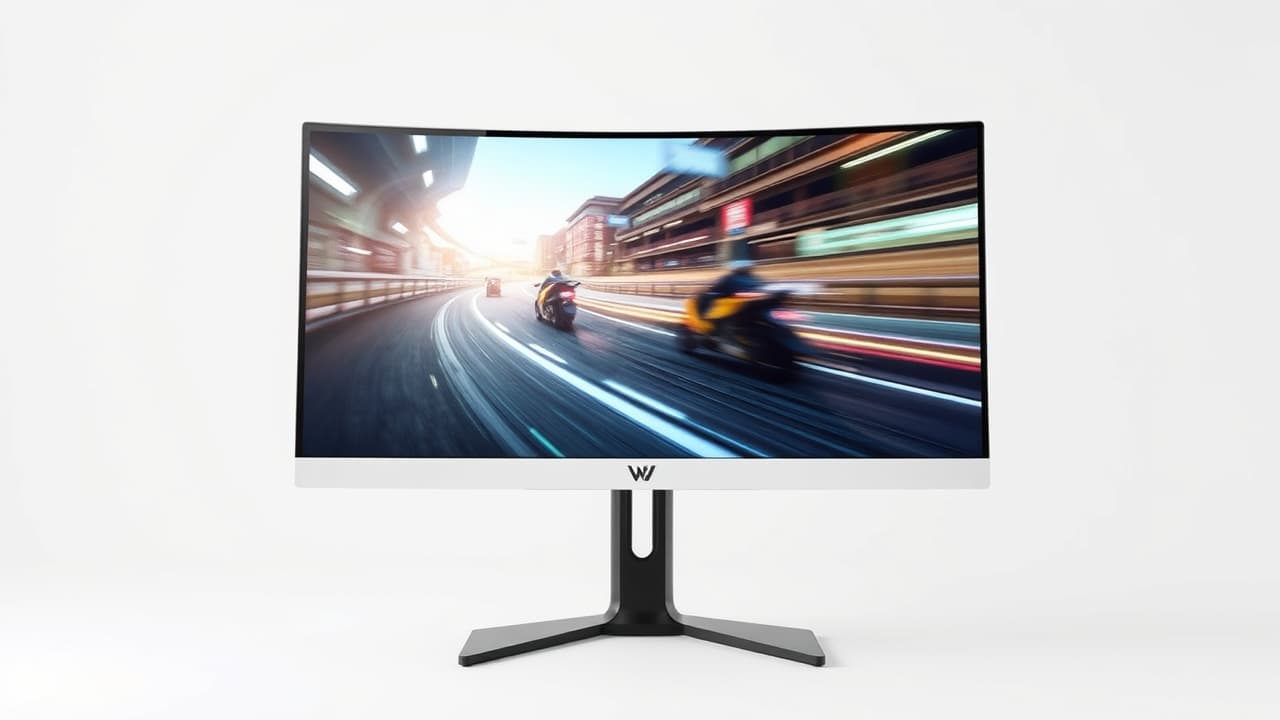
The refresh rate, measured in Hertz (Hz), indicates how many times per second your monitor updates its display. A higher refresh rate translates to smoother motion and reduced motion blur, significantly enhancing the visual fluidity of everything from scrolling web pages to fast-paced action in games on 27-inch monitors.
For general office work and video streaming, a 60Hz refresh rate is sufficient, but it will feel less fluid during dynamic content.
A 144Hz to 180Hz refresh rate is widely recommended for most gaming and offers a noticeable improvement in smoothness for mixed use. This range provides a great balance without being overly expensive.
For competitive esports players, 240Hz or higher (up to 480Hz) is the new gold standard, providing an ultra-smooth visual edge and enhanced responsiveness. However, differences become harder to perceive for most users beyond 240Hz.
Keep in mind that achieving high refresh rates in games requires a powerful GPU, especially at higher resolutions. While higher refresh rates generally increase the monitor's price, the enhanced fluidity is often worth the investment for gamers and those who appreciate a smoother desktop experience on their 27-inch monitors.
Color Accuracy and Gamut
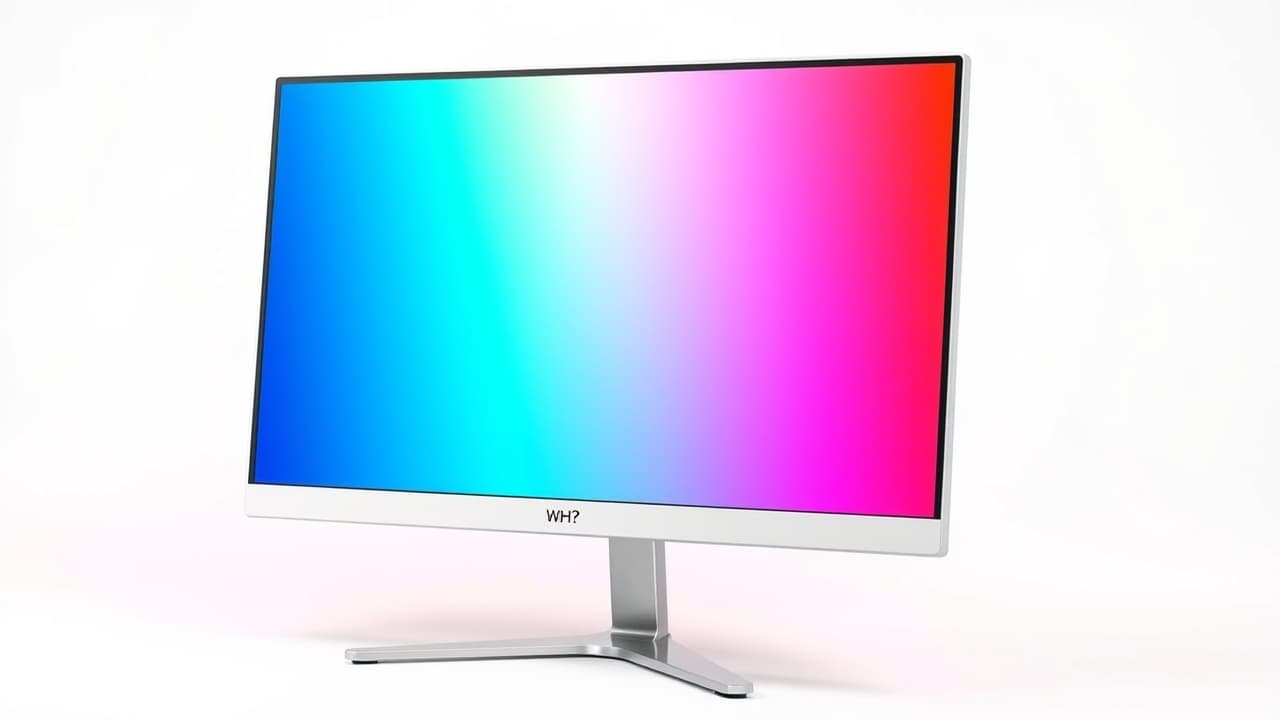
Color accuracy refers to how faithfully a monitor reproduces colors, while color gamut describes the range of colors it can display (e.g., sRGB, DCI-P3, Adobe RGB). These factors are paramount for professional monitors used in creative work and significantly enhance the visual quality for all users of 27-inch monitors.
For professional content creation (photo/video editing, graphic design), look for monitors with 99%+ Adobe RGB or 99%+ DCI-P3 coverage and a Delta E value of less than 1.0. This indicates exceptional color accuracy and a very wide color gamut.
For most creative tasks, web content, and immersive gaming, 100% sRGB coverage or 95%+ DCI-P3 coverage with a Delta E value of less than 2.0 provides excellent color reproduction.
Poor color accuracy (e.g., a Delta E greater than 3.0) or limited color gamut (e.g., 72% sRGB) results in inaccurate and less vibrant colors, making the monitor unsuitable for any color-critical work and detracting from general visual quality.
Many 27-inch monitors offer factory calibration to ensure better accuracy out of the box. While monitors with wider color gamuts and higher accuracy often come at a premium price, the investment is worthwhile for tasks where precise color representation is essential.
Price

Price is often the most important single factor for many consumers, influencing the features and specifications they can realistically consider. The cost of 27-inch monitors can vary significantly based on its capabilities, panel technology, and brand.
For budget-conscious buyers, you can find basic 27-inch options under $150. These typically offer 1080p resolution and refresh rates around 75-100Hz, suitable for general use and basic office tasks.
The mid-range, typically $250-$450, offers an excellent balance of features and performance. Here you'll find 1440p resolution, 144Hz+ refresh rates, and quality IPS panels, providing great value for most users, including gamers and professionals seeking new 27-inch monitors.
High-end monitors, especially those with 4K resolution, OLED panels, or advanced features, can easily exceed $1,000. While these offer premium experiences, their price can be a significant barrier for many.
It's important to consider your budget alongside your primary use case. Higher resolutions, faster refresh rates, advanced panel types, and extensive connectivity all contribute to a higher price. Balancing these factors will help you find the best 27-inch monitors within your financial comfort zone.
Enhancing Your Experience with 27-inch Monitor Features
Beyond the core specifications, several features can significantly enhance your experience with 27-inch monitors, offering convenience, improved performance, or better comfort. These differentiating elements can be crucial in tailoring your display to your specific needs.
Response Time
Response time measures how quickly a pixel can change from one color to another, typically from gray to gray (GtG) or through motion picture response time (MPRT). This is a crucial feature for gaming, as it directly impacts motion clarity and the reduction of visual artifacts on 27-inch monitors.
For competitive gaming, aim for a response time of 1ms (GtG or MPRT) or less. This significantly minimizes ghosting, blurring, and smearing of moving images, providing a sharper and more responsive experience.
OLED panels offer instantaneous pixel response, often as low as 0.03ms, delivering unparalleled motion clarity.
Slower response times, such as 8ms or higher, can cause noticeable ghosting and blurring, making it less suitable for fast-paced gaming and potentially impacting overall visual fluidity.
While TN panels traditionally offered the fastest response times, modern IPS and OLED panels have made significant strides, often matching or exceeding TN speeds without sacrificing color accuracy or viewing angles. When choosing 27-inch monitors, consider response time if gaming is a primary use.
Adaptive Sync
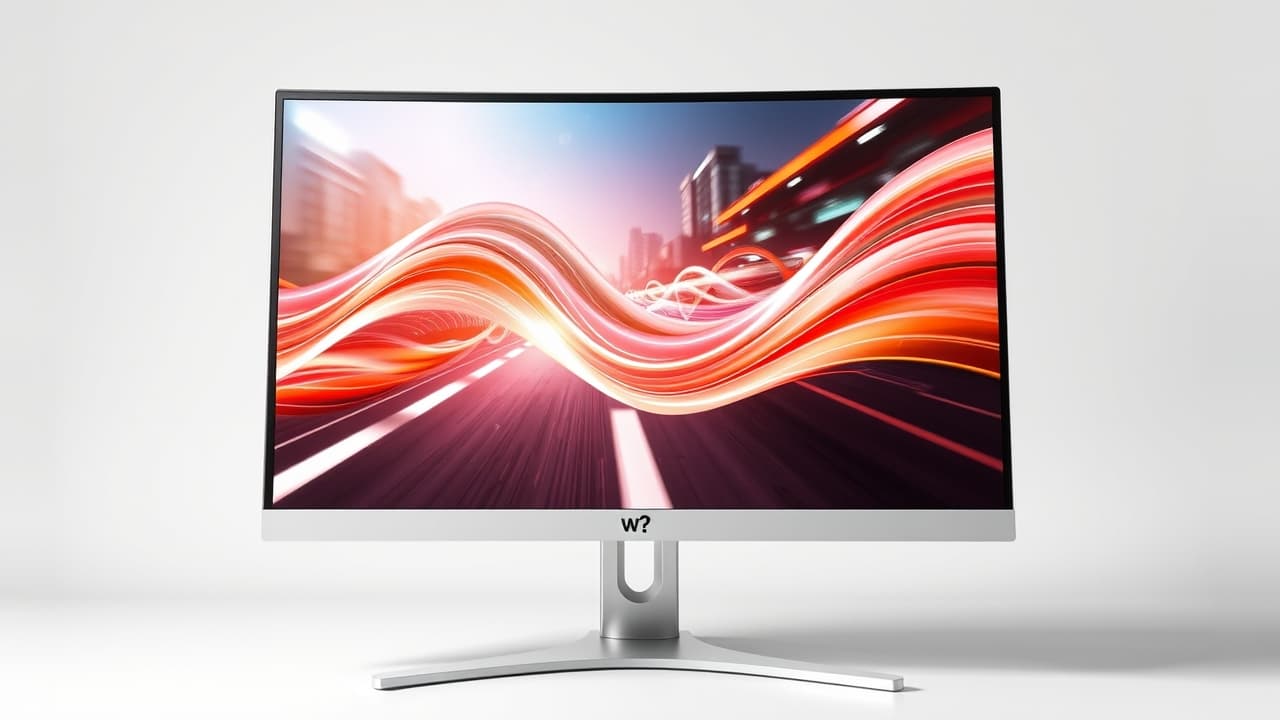
Adaptive Sync technologies, such as AMD FreeSync and NVIDIA G-Sync, synchronize your monitor's refresh rate with your graphics card's frame rate. This feature is a must-have for gaming, as it dramatically improves the gaming experience by eliminating visual artifacts on 27-inch monitors.
It prevents screen tearing (where the screen displays parts of multiple frames simultaneously) and reduces stuttering, resulting in a much smoother and more fluid gameplay experience.
Adaptive Sync also helps lower input lag, which is crucial for competitive gamers who rely on instantaneous responsiveness.
Look for NVIDIA G-Sync Ultimate or AMD FreeSync Premium Pro for the most comprehensive features, including HDR support and low-frame-rate compensation.
While G-Sync monitors with dedicated hardware modules can add to the cost, G-Sync Compatible and FreeSync Premium options offer excellent value for most gamers. Ensure your graphics card is compatible with the monitor's adaptive sync technology for optimal performance with your 27-inch monitors.
Contrast Ratio

The contrast ratio measures the difference between the brightest whites and the darkest blacks a monitor can display. A higher contrast ratio makes images appear more vibrant, sharp, and dynamic, with greater depth and detail in both bright and dark scenes on 27-inch monitors.
OLED/QD-OLED panels offer theoretically infinite contrast ratios by turning off individual pixels, resulting in true blacks and unmatched image depth.
VA panels and IPS panels with IPS Black technology can achieve significantly higher contrast, typically ranging from 2,000:1 to 3,000:1, enhancing image vibrancy and detail compared to standard IPS.
Monitors with contrast ratios below 900:1 often produce washed-out images with poor detail in dark areas, leading to a generally flat visual experience.
While standard IPS panels generally have lower contrast, advancements like IPS Black technology and Mini-LED backlighting are significantly improving their performance. For an immersive visual experience, especially for movies and games, prioritizing a monitor with a strong contrast ratio is highly beneficial.
Brightness and HDR Support

Brightness, measured in nits (cd/m²), determines how luminous your screen can get, impacting visibility in different lighting conditions. HDR (High Dynamic Range) support, on the other hand, boosts vividness and contrast for a more lifelike and immersive image, particularly for media consumption and gaming on 27-inch monitors.
A peak brightness of 400 nits provides good visibility in bright rooms and is the minimum for VESA DisplayHDR 400 certification.
For a truly impactful HDR experience, look for VESA DisplayHDR 600 or higher, or DisplayHDR True Black (for OLED). These certifications indicate excellent peak brightness and deep blacks, offering a vibrant and immersive visual experience.
Monitors with brightness below 250 nits may appear dim in well-lit environments.
While many 27-inch monitors claim HDR support, the quality varies significantly. Achieving great HDR performance often requires advanced panel technologies like OLED or Mini-LED, which can increase the price. Consider your primary use case: for general productivity, high brightness is useful, but for immersive media and gaming, true HDR support is a game-changer.
Connectivity Options

The types and number of ports on a monitor are essential for integrating it into your existing setup, connecting to various devices, and supporting advanced features. Good connectivity can significantly reduce cable clutter and enhance productivity with 27-inch monitors.
Look for USB-C with power delivery (90W+). This allows a single cable to handle video, data, and laptop charging, making it ideal for modern laptop users and reducing cable clutter.
HDMI 2.1 and DisplayPort 1.4/2.1 are crucial for supporting high resolutions and refresh rates with modern PCs and next-gen consoles.
A built-in USB hub provides convenient ports for connecting peripherals like keyboards, mice, or webcams directly to your monitor.
A KVM switch is a premium feature that allows you to control multiple computers or devices using a single keyboard, video, and mouse setup, ideal for multitasking across systems.
Avoid 27-inch monitors with only older or limited ports (e.g., VGA, DVI, HDMI 1.4) as they restrict compatibility and capabilities with modern hardware. Monitors with advanced connectivity options, such as Thunderbolt, tend to be pricier but offer unmatched versatility.
Ergonomics and Stand Adjustability
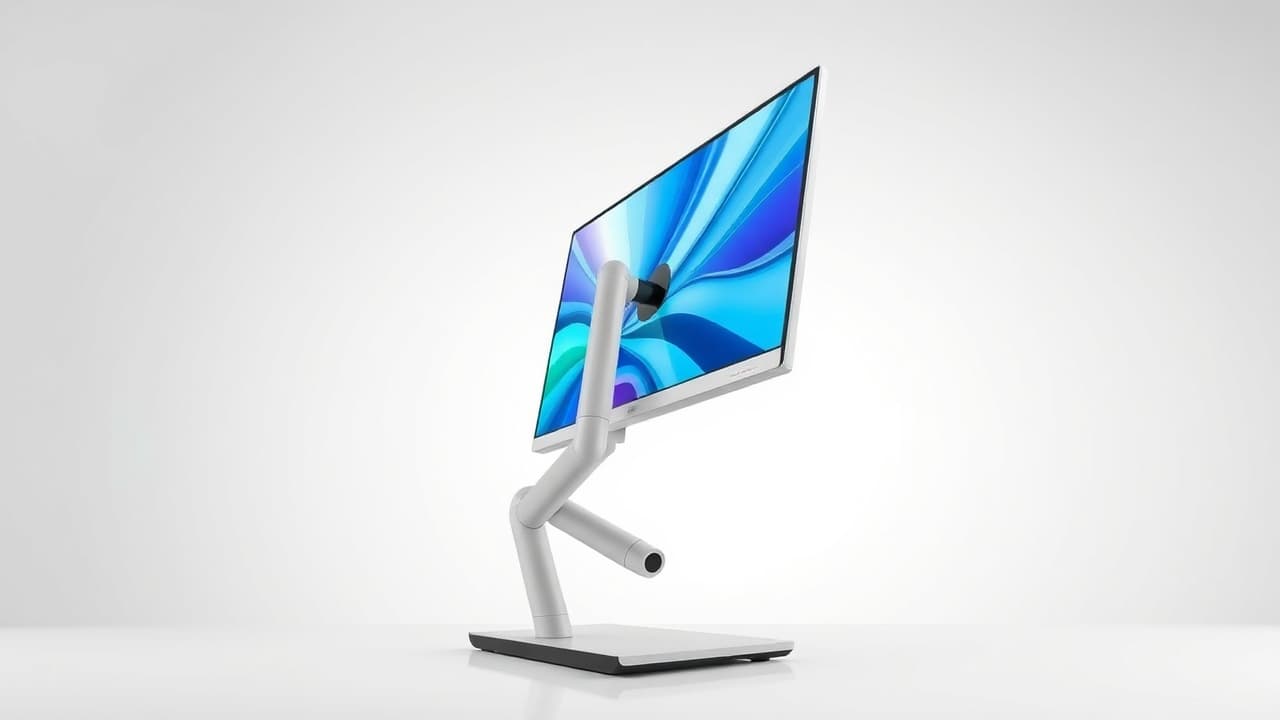
The adjustability of your monitor stand and its compatibility with VESA mounts play a significant role in your comfort and productivity, especially during long working sessions. A good ergonomic stand can prevent neck strain and improve posture when using 27-inch monitors.
Look for a stand with full adjustability, including height, tilt, swivel, and pivot. This allows you to achieve the optimal viewing angle, reducing discomfort.
Pivot functionality (landscape/portrait mode) is particularly useful for coding, document review, or multi-monitor setups.
VESA mount compatibility is highly desirable, allowing you to attach the monitor to an aftermarket arm or wall mount for greater flexibility and to free up desk space.
Monitors with only a tilt-only stand offer minimal ergonomic adjustment and can contribute to eye strain and poor posture over time. While fully adjustable stands may increase the monitor's price, the long-term benefits for comfort and health are well worth the investment, especially for those who spend many hours in front of their 27-inch monitors.
Eye Care Features
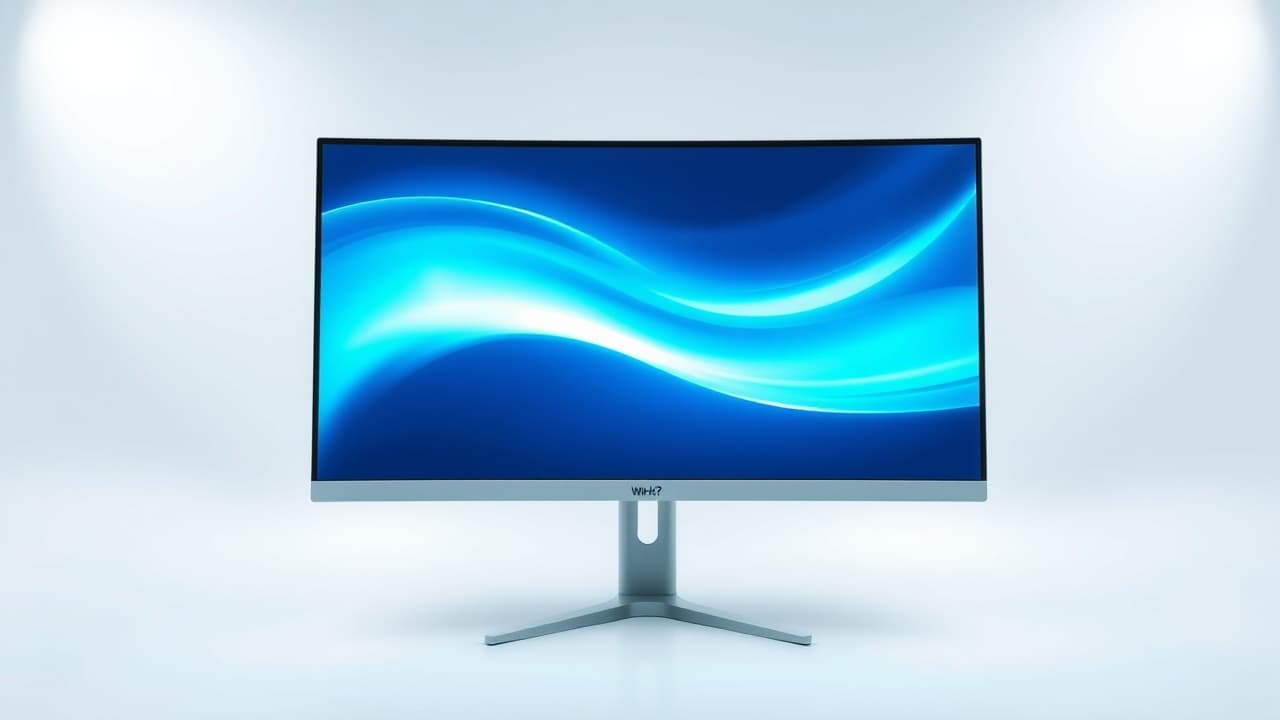
For users who spend extended periods in front of their monitor, features designed to reduce eye strain and discomfort are invaluable. These technologies aim to make prolonged screen time more comfortable and healthier on 27-inch monitors.
Blue light filters (e.g., LowBlue Mode, Eye Saver Mode) reduce harmful blue light emissions, which can minimize eye fatigue and promote better sleep. Look for hardware-based solutions or TÜV Rheinland-certified options for optimal performance without significant color distortion.
Flicker-free technology eliminates screen flickering, a common cause of eye strain and headaches, especially during long work hours.
Adaptive Brightness (sometimes called Brightness Intelligence) automatically adjusts the screen's brightness based on ambient light, further reducing eye strain.
While some blue light filters can introduce a slight yellow tint, many modern solutions mitigate this. Prioritizing 27-inch monitors with certified eye care features is a smart choice for anyone who spends significant time in front of a screen, ensuring a more comfortable and healthier viewing experience.
Screen Curvature
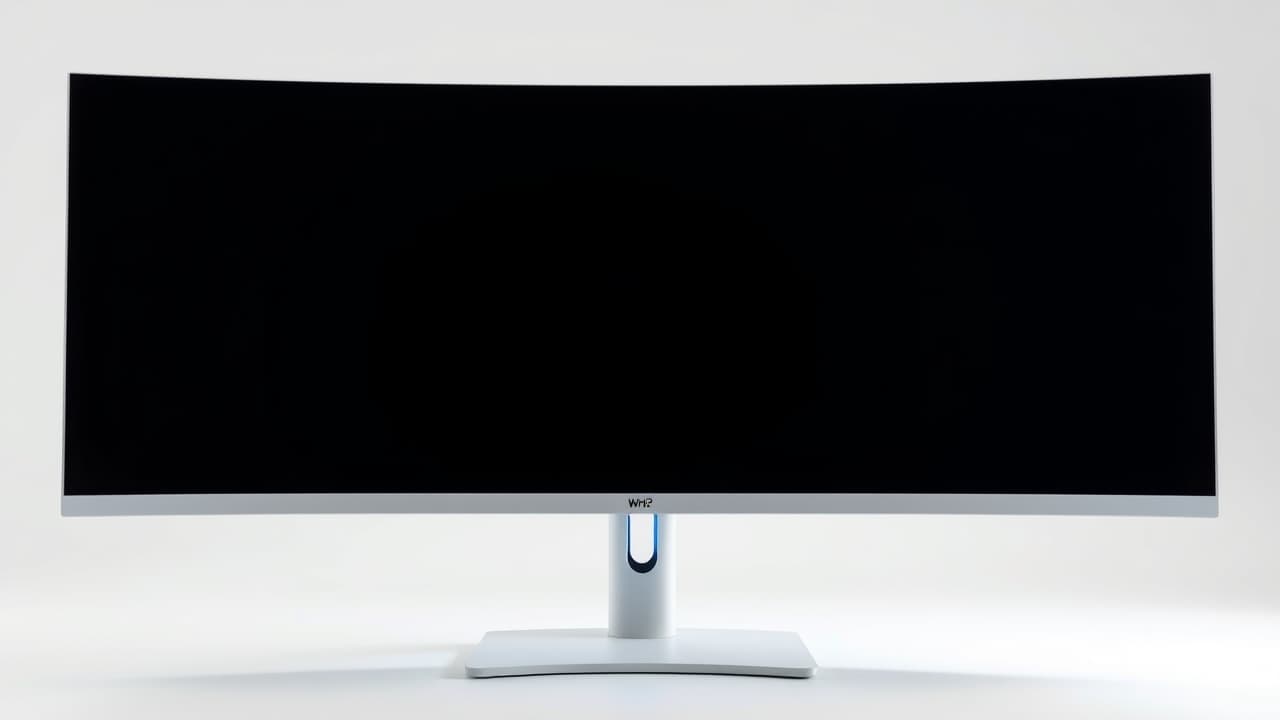
Screen curvature refers to the degree to which a monitor's screen is bent, measured in 'R' (radius in millimeters). While not essential for all users, a curved screen can offer unique benefits, particularly for immersion and visual comfort with 27-inch monitors.
Curved monitors enhance immersion by wrapping visuals around your field of view, which is especially beneficial for gaming and entertainment, creating a more engaging experience.
They can also reduce eye strain by aligning with the natural curvature of the human eye, minimizing distortion at the edges and potentially making long sessions more comfortable.
For a 27-inch monitor, curvatures like 1500R or 1800R offer a good balance of immersion and comfort.
While curved 27-inch monitors offer unique advantages, they may require an adjustment period and can occupy more desk space. For precise tasks like highly detailed photo editing, a flat screen might still be preferred due to its uniform surface. Ultimately, screen curvature is a matter of personal preference, best experienced firsthand if possible.
How to Choose the Right 27-inch Monitor
Selecting the ideal 27-inch monitor involves balancing your primary use case with key technical specifications. This screen size offers a versatile sweet spot for many users, providing ample screen real estate without dominating your desk. To narrow down your options among 27-inch monitors, consider whether your priority is professional color accuracy, immersive gaming, or everyday productivity.
Understanding how different features impact your experience is crucial. Focus on factors like resolution for clarity, panel technology for color and contrast, and refresh rate for motion smoothness. By aligning these elements with your specific needs, you can confidently choose a 27-inch monitor that enhances your daily computing tasks and entertainment.
Professional Creative Work
For graphic designers, video editors, photographers, and other creative professionals, precise color reproduction and sharp detail are paramount. Users in this category require 27-inch monitors that can accurately display a wide range of colors and offer extensive connectivity for a streamlined workflow.
Critical factors for professional creative work include a high resolution (4K or 5K) for pixel density and ample workspace, advanced panel technology like IPS Black for superior contrast and viewing angles, and exceptional color accuracy with wide gamut coverage (99%+ DCI-P3, low Delta E). Robust connectivity, especially Thunderbolt 4 with power delivery and KVM functionality, is also essential for managing multiple devices efficiently with these 27-inch monitors.
Best Options
Dell UltraSharp U2725QE monitor
This Dell 27-inch monitor is an excellent choice for creative professionals due to its 4K resolution and IPS Black panel, delivering significantly deeper blacks and superior image depth. While offering extensive color gamut and Thunderbolt 4 connectivity for demanding tasks, users should be aware of potential firmware issues and the lack of built-in speakers or a webcam.
Resolution: 3840 x 2160 (4K UHD) with 163 PPI for sharp visuals.
Panel Technology: IPS Black for 3000:1 contrast and wide viewing angles.
Color Accuracy: 99% DCI-P3, 100% sRGB, 100% BT.709, 99% Display P3 coverage (10-bit color).
Connectivity: 1x Thunderbolt 4 (140W PD, DP Alt Mode), 1x Thunderbolt 4 Downstream, HDMI 2.1, DP 1.4, KVM, 2.5GbE Ethernet.
Ergonomics: Full height, tilt, swivel, and pivot adjustments.
BenQ PD2730S
For professionals demanding the highest detail, the BenQ PD2730S delivers stunning 5K resolution with exceptional color accuracy and a Nano Matte anti-glare finish for comfortable, reflection-free work. Its robust Thunderbolt 4 hub streamlines connectivity, though its 60Hz refresh rate and poor integrated speakers are trade-offs to consider for this 27-inch monitor.
Resolution: 5120 x 2880 (5K Ultra HD) with 218 PPI for razor-sharp text.
Panel Technology: IPS Black with 2000:1 contrast and Nano Matte anti-glare surface.
Color Accuracy: 98% DCI-P3, 100% sRGB, Delta E ≤ 2, factory calibrated (10-bit color).
Connectivity: 2x Thunderbolt 4 (90W PD, daisy-chaining), HDMI 2.1, DisplayPort 1.4, KVM, USB hub.
Audio: Integrated 2x 3W stereo speakers (modest quality).
High-Performance 4K Gaming
Gamers seeking the pinnacle of visual fidelity combined with competitive speed will prioritize 4K resolution and high refresh rates. These users want stunning, immersive graphics with smooth motion, vibrant HDR, and technologies that eliminate tearing and stuttering on their 27-inch monitors.
For high-performance 4K gaming, look for a 27-inch monitor with 4K resolution (3840x2160), a refresh rate of 240Hz, and an ultra-fast 0.03ms response time to ensure blur-free action. QD-OLED panel technology is ideal for its infinite contrast and perfect blacks, while robust HDR support (DisplayHDR 400 True Black or higher) and Adaptive Sync (G-Sync Compatible/FreeSync Premium Pro) are essential for a truly immersive and fluid experience.
Best Options
ASUS ROG Swift OLED PG27UCDM
This 27-inch monitor delivers an exceptional 4K gaming experience with its QD-OLED panel, offering vibrant colors, perfect blacks, and stunning HDR. While its 240Hz refresh rate and 0.03ms response time ensure incredibly smooth gameplay, users should be mindful of its high price, potential VRR flickering, and reflections from its semi-glossy screen.
Resolution: 3840 × 2160 (4K UHD) with 166 PPI.
Refresh Rate: 240 Hz with 0.03 ms GtG response time.
Panel Technology: 4th-generation QD-OLED with infinite contrast and semi-glossy screen coating.
HDR Support: HDR10, DisplayHDR 400 True Black, Dolby Vision with 1,000 cd/m² peak brightness.
Adaptive Sync: AMD FreeSync Premium Pro, NVIDIA G-SYNC Compatible.
Samsung 27-inch Odyssey OLED G8 (G81SF) 4K UHD Gaming Monitor
The Samsung Odyssey OLED G8 offers stunning 4K QD-OLED visuals and a blazing 240Hz refresh rate, making it ideal for immersive high-resolution gaming. Its effective matte anti-glare coating reduces reflections, though its high price, lack of USB-C, and potential display flickering are important considerations for this premium 27-inch monitor.
Resolution: 3840 x 2160 (4K UHD) with 166 PPI.
Refresh Rate: 240Hz with 0.03ms GtG response time.
Panel Technology: QD-OLED with 1,000,000:1 contrast and matte anti-glare coating.
HDR Support: VESA DisplayHDR True Black 400, HDR10, HDR10+ with 1000 nits peak brightness.
Connectivity: 2x HDMI 2.1, 1x DisplayPort 1.4, USB hub (no USB-C).
Ultimate Gaming Responsiveness
Competitive gamers prioritize every millisecond, demanding the fastest refresh rates and lowest response times to gain an edge. For these users, QHD (1440p) resolution is often preferred over 4K to maximize frame rates, ensuring unparalleled motion clarity and responsiveness in fast-paced titles on 27-inch monitors.
Key specifications for ultimate gaming responsiveness include a refresh rate of 480Hz or higher, an instantaneous 0.03ms GtG response time, and QD-OLED or OLED panel technology for superior motion clarity. Robust Adaptive Sync support (FreeSync Premium Pro or G-Sync Compatible) is crucial to eliminate screen tearing and stuttering, providing a smooth and consistent visual experience during intense gameplay on these 27-inch monitors.
Best Options
MSI MPG271QR X50
The MSI MPG271QR X50 is designed for competitive gamers who demand the fastest possible performance from a 27-inch monitor. Its 500Hz refresh rate and 0.03ms response time deliver unmatched motion clarity. However, users should be prepared for a tricky firmware update process, potential inconsistencies with AI Care features, and the absence of internal speakers.
Resolution: 2560 x 1440 (QHD).
Refresh Rate: 500Hz with 0.03ms GTG response time.
Panel Technology: 3rd-generation QD-OLED with 1.5M:1 contrast.
Connectivity: DisplayPort 2.1a, 2x HDMI 2.1, USB Type-C (98W PD), KVM.
OLED Care: OLED Care 3.0 with AI-driven burn-in prevention and 3-year warranty.
LG 27 UltraGear OLED (27GX790A)
For competitive players seeking top-tier speed and OLED visuals, the LG 27 UltraGear OLED is an excellent choice. Its 480Hz refresh rate and 0.03ms response time provide an undeniable competitive edge. However, its high price for a 1440p screen, potential Adaptive Sync flickering, and lack of USB-C connectivity are notable drawbacks for this 27-inch monitor.
Resolution: 2560 x 1440 QHD.
Refresh Rate: 480Hz with 0.03ms response time.
Panel Technology: OLED with 1,500,000:1 contrast ratio.
HDR Support: HDR 400 True Black with 1175 cd/m2 peak brightness.
Connectivity: DisplayPort 2.1 x 1, HDMI 2.1 x 2, USB 3.0 x 3 (no USB-C).
Premium All-Around Experience
Users seeking a versatile 27-inch monitor that excels in both high-end gaming and productivity will appreciate a balance of stunning visuals, smooth performance, and comprehensive features. This category is for those who want premium quality without necessarily needing the absolute fastest or most specialized display.
For a premium all-around experience, look for 4K resolution combined with a high refresh rate (240Hz) and a fast response time (0.03ms). A QD-OLED panel provides superior image quality with vibrant colors and deep blacks. Essential features include robust connectivity like USB-C with power delivery, KVM functionality for multitasking, and a comprehensive burn-in warranty to ensure longevity for your 27-inch monitor.
Best Option
ASUS ROG Strix OLED 27 (XG27UCDMG)
The ASUS ROG Strix OLED 27 offers an excellent blend of features for users who want a high-performance 4K 240Hz QD-OLED display for both gaming and professional tasks. Its stunning visuals, fast response time, and versatile connectivity with KVM functionality make it a compelling choice. However, users should be aware of potential VRR brightness flickering and the semi-glossy screen's reflectivity.
Resolution: 3840 x 2160 (4K) with ~166 PPI.
Refresh Rate: 240Hz with 0.03ms G2G response time.
Panel Technology: Samsung 4th generation QD-OLED with 1.5 million:1 contrast and semi-glossy screen.
Connectivity: DisplayPort 1.4, 2x HDMI 2.1, USB Type-C (90W PD), KVM switch.
OLED Care: Asus OLED Care Pro, custom heatsink, 3-year burn-in warranty.
Budget-Friendly 4K Productivity
For users who prioritize a crisp 4K visual experience for everyday tasks, office work, and casual media consumption without breaking the bank, a budget-friendly 27-inch monitor is ideal. These users are willing to forgo advanced gaming features or extensive connectivity in favor of excellent resolution and a smooth general experience at an accessible price.
When seeking a budget-friendly 4K productivity 27-inch monitor, focus on 4K (3840x2160) resolution for sharp text and images, an IPS panel for good color and viewing angles, and a refresh rate of at least 120Hz for noticeably smoother motion than standard 60Hz displays. Good ergonomic adjustments are also important for comfort during long work sessions, and integrated speakers can be a convenient bonus.
Best Option
Dell 27 Plus 4K Monitor (S2725QS)
The Dell 27 Plus 4K Monitor stands out as an incredible value for users seeking a sharp 4K display for productivity and general use. Its 120Hz refresh rate provides a premium, smooth experience for daily tasks. However, it notably lacks a USB-C port and its integrated speakers are often described as poor, which might require external audio solutions for this 27-inch monitor.
Resolution: 3840 x 2160 (4K UHD).
Refresh Rate: 120Hz with 4ms GTG response time.
Panel Technology: IPS with 1500:1 static contrast ratio and 99% sRGB color.
Ergonomics: Full height, tilt, swivel, and pivot adjustments.
Connectivity: 2x HDMI 2.1, 1x DisplayPort 1.4, integrated 2x 5W speakers (no USB-C).





